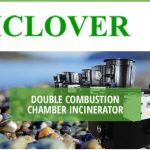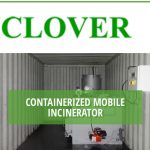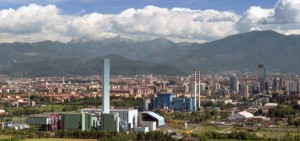Doubel Combustion Chamber
All Incinerators are Doubel Combustion Chamber with One Fuel Burner Each. After Burner Technology for Completely Combustion and Cleaner World.
Read MoreHigh Temperature Incineration
Temperature Range 800 Degree to 1200 Degree in Combustion Chamber. Temperature Thermocouple Monitor and Controller. High Quality Fire Brick and Refactory Cement.
Read MoreGet Lastest News
There are latest incinerator news like technical, public news, business tender for medical waste incinerator,animal incineration, pet cremation
Read MoreNanjing Clover Medical Technology Co.,Ltd.
Email: sales@clover-incinerator.com | Tel: +86-25-8461 0201
Regular model incinerator for market with burning rate from 10kgs to 500kgs per hour and we always proposal customer send us their require details, like waste material, local site fuel and power supply, incinerator operation time, etc, so we can proposal right model or custom made with different structure or dimensions.
Incinerator Model YD-100 is a middle scale incineration machine for many different usage: for a middle hospital sickbed below 500 units, for all small or big size family pets (like Alaskan Malamute Dog), for community Municipal Solid Waste Incineration, etc. The primary combustion chamber volume is 1200Liters (1.2m3) and use diesel oil or natural gas fuel burner original from Italy.
Latest Post
Petrol oil fired medical waste incenerator
Heat Waste Incinerator Design D. MEGABYTES 750XL Melt Rate-150Kg/ hr minimal Weight( Kg) -4000 kg Additional Chamber
(double chamber with post-burning) Gas Retention Time 2 2nd Gas Diesel Power Supply for control box 220V-240, single
stage 50-60Hz Minimum working temperature amount 1200 oC One year spare parts bundle for total maintainability 10m pipe
pipeline. 1100 litre fuel Storage tank +pipeline system Containerised (the container will surely act as home ) Added chimney expansion
1 metre high One (1) year guarantee.
Burner of 20 Kg: 03 Devices
Electrically controlled burner.
Two-compartment burner having a power of 20 pound / hour.
Incinerator with decreased upkeep and operating costs; Geared up having an automatic control panel in addition to very easy to make use of with
electro-magnetic locking of the door.
A primary waste decrease chamber of 900 ° C. A blog article minute burning chamber of gases created in the primary room
at least 1100 ° C.
Carbon residues in ash less than 5 percent by weight based on European Directive 2000/76/ EC.
With refractory mobile lining in goods of higher quality
2/ (CIF Term) Price of shipping from manufacturing facility to PAPUA NEW GUINEA port of LAE, Morobe province
3/ Price of two Clover engineers to Supervise, Installation, Training our engineers and appointing the medical; squander
incinerator.
Waste Materials with Ability of 50 Kg/Hr
Product Description
Nanjing Clover Medical Technology Co., Ltd..
Key Features: * All versions with Dual combustion room. * Stainless Steel chimney/stack, long lifetime. *based on sequence * High temperature, long lifetime of incinerator. * Free or minimal installation on site. * High burn rate, from 10kgs to 500kgs per hourto 6ton per day. * PLC Control Plane. *based on order * New Design for pet animal cremation business. * One year guarantee on incinerator and parts in stock.
| Items | Specification | ||||
| Model | TS10(PLC) / TS20(PLC) / TS30(PLC) / TS50(PLC) / TS100(PLC) | ||||
| Burn Rate | 10 kg/hour | 20 kg/hour | 30 kg/hour | 50 kg/hour | 100 kg/hour |
| Main Product List | Double Combustion Chamber | ||||
| Smoke Filter Chamber | |||||
| PLC Mode Control Case | |||||
| Stainless Steel Chimney | |||||
| Italy oil/gas burner: 02 units | |||||
| Oil Tank (if oil fuel) | |||||
Application Scope: 1. Hospital& clinic: Iatric Waste, Infectious Waste, Dressing, Bio-Waste, Medicine. 2. Slaughter House &Pet Hospital &Farm: Dead Animal, Bio-Waste. 3. Community & Sea Port & Station: Municipal Solid Waste, etc. 4. Laboratories, Remote Locations, Disaster Relief Operations, Animal Cremation Company License No.,: 320105000138343
Incinerator Maximizing Combustion Performance
More smoke as well as other pollutants are found right into the air during the ‘start-up’ also as ‘trendy ’ stages of the burn cycle
than throughout the ‘total melt phase ’ when elevated temperatures are preserved. Low temperature level smoldering fires have to be
prevented. Melt only dry feedstock and sometimes add extra waste into the fire in order to keep high melt
temperatures up till all waste has actually been ruined. If waste is to be burnt on the floor, using heavy or steep-walled
‘pits’ has to be avoided since this will stop the essential rough mixing of oxygen with the burnable gases.
Preferred working temperature level should be accomplished as quickly as you can when running any burning or incineration apparatus. A
quick ‘start-up’ can be accomplished by freely loading completely dry paper, paperboard packaging and without treatment wood right into the decrease
of the gadget. Dry, publicly packaged material will spark more rapidly and also burn more thickly than a moist, firmly packed tons.
Damp waste need to be contained after the fire is burning. Added waste needs to only be contained in these incinerators once the ‘cool off’ point has actually been
completed as well since it’s secure to do so.
Modern batch feed incinerators are made with main and auxiliary burners to accomplish and preserve the needed high
melt temperatures. Added waste needs to only be included in these incinerators once the ‘cool off’ stage has actually been
completed as well as it is risk-free to do so.
Pet Crematory
Basic Info.
Product Description
| Items/Model | YD-10C | YD-20C | YD-30C | YD-50C |
| Burning Rate (kgs/Hour) | 10 kgs/Hr. | 20 kgs/Hr. | 30 kgs/Hr. | 50 kgs/Hr. |
| Feed Capacity (kgs) | 40 kgs | 40 kgs | 50 kgs | 80 kgs |
| Equipment Weight | 1200 kgs | 1200 kgs | 1800 kgs | 2200 kgs |
| Picture | ||||
| Primary Chamber (Liters) | 200 | 200 | 250 | 400 |
| Secondary Chamber (Liters) | 140 | 140 | 140 | 140 |
| External Dimensions (cm) | 170x140x160 | 170x140x160 | 170x140x190 | 180x160x200 |
| Internal Dimensions (cm) | 55x55x65 | 55x55x65 | 55x55x85 | 70x70x85 |
| Oil Tank(Liters) | 50 | 100 | 100 | 150 |
| Door Opening (cm) | 38 x 48 | 38 x 48 | 38 x 48 | 45×55 |
| Chimney (M) | 5 | 5 | 5 | 5 |
| Chimney Type | Stainless Steel | Stainless Steel | Stainless Steel | Stainless Steel |
| Secondary Chamber | YES | YES | YES | YES |
| Mix-Combustion Chamber | YES | YES | YES | YES |
| Smoke Filter Chamber | YES | YES | YES | YES |
| Combustion Fuel | Oil/Gas | Oil/Gas | Oil/Gas | Oil/Gas |
| Residency Time | 2.0 Sec. | 2.0 Sec. | 2.0 Sec. | 2.0 Sec. |
| Temperature Monitoring | YES | YES | YES | YES |
Getting a grip on our garbage
Nobody likes to be thought of as a garbage factory but — like it or not — that is what cities have always been and will continue to be, despite our sense of sophisticated entitlement. While only the most narrow-minded would dismiss the enormous cultural, social and economic contribution of the city to human development, there is a sobering reminder of the cost in the fact that we are also perceived as perpetual-motion refuse machines in the surrounding hinterlands to which we increasingly export our rubbish while importing their resources and young people.
In Vancouver, for example, just over 600,000 inhabitants generated 557,334 tonnes of waste last year. Sort that into commercial, demolition and residential waste and it turns out that the average citizen produces about half a tonne of garbage a year. Put another way — because fooling around with dimensional statistics is always fun — some amusing calculations for converting residential waste to volume that were developed in California show Vancouverites produce roughly enough garbage to bury Library Square to the depth of a 37 storey building, which is about four times higher than the present library. Our garbage tower would rank as the 22nd tallest building in the city. That’s just for 2013. Add another one, likely taller, each year.
Statistics Canada reports that between 2001 and 2006, population growth in the country’s 33 main metropolitan areas grew at a rate which was seven times that for small towns and rural areas. Most Canadians now live in just six of those metropolitan areas — 10 million of us in the regions surrounding Toronto, Montreal and Vancouver. And even though there have been dramatic improvements in recapturing both materials for recycling and for energy from the urban garbage stream, the actual volume is obviously going to continue to be a problem with which we must wrestle.
If we are living examples of American writer Mason Cooley’s aphorism that human society sustains itself by transforming nature into garbage, it behooves us all to stop thinking about garbage simply as something useless to throw away. Start thinking about it instead as a resource we can exploit for all kinds of added value. In fairness, municipal waste managers, particularly across the Metro Vancouver region but in many other cities, too, have been among the most progressive thinkers in this. They have launched campaigns urging us to reuse, recycle and repurpose while developing practical and pragmatic ways to extract genuine economic value from the garbage stream.
As a result, we have effective programs for diverting organic waste — from kitchen scraps to lawn cuttings into compost — which can be reinvested in the natural landscape. Across Canada, more than 60 facilities — including here — now recover methane gas from landfills. Not only is gas used to generate energy, the extraction process reduces greenhouse emissions from urban landfills equivalent to almost seven million tonnes of carbon dioxide a year. In Edmonton, a new plant converts municipal garbage to cleaner-burning biofuels to further reduce carbon footprints. Others mine discarded computer and electronic parts. And so on.
The success of these strategies has been remarkable. In Vancouver, for example, per capita waste generation has been trending downward with satisfying consistency since 2007. Overall, the diversion rate for municipal waste has improved from 37 per cent in 1994 to almost 60 per cent in 2014.














